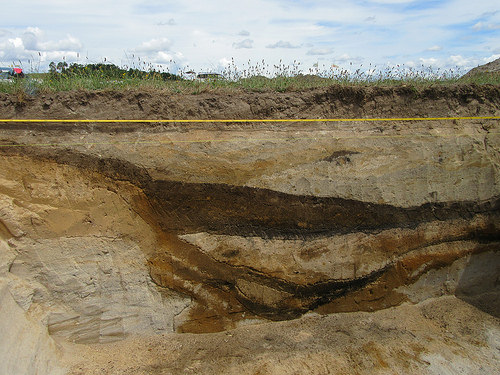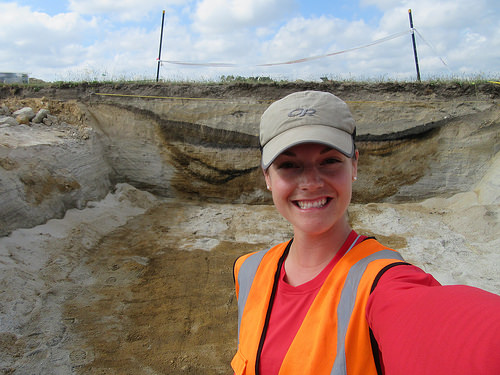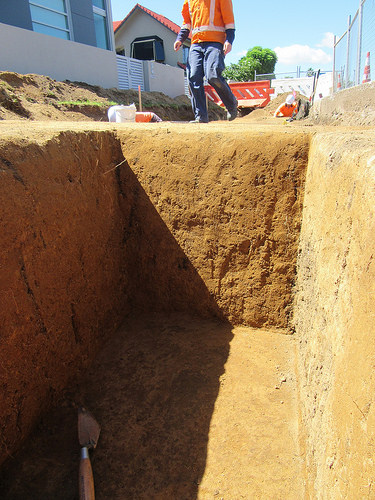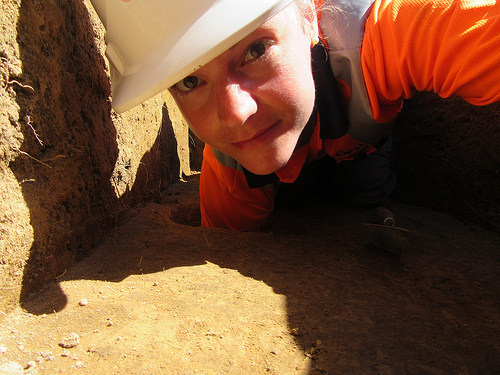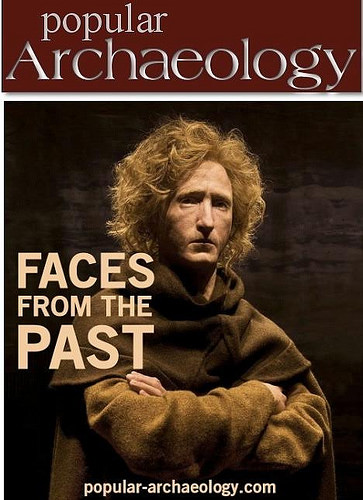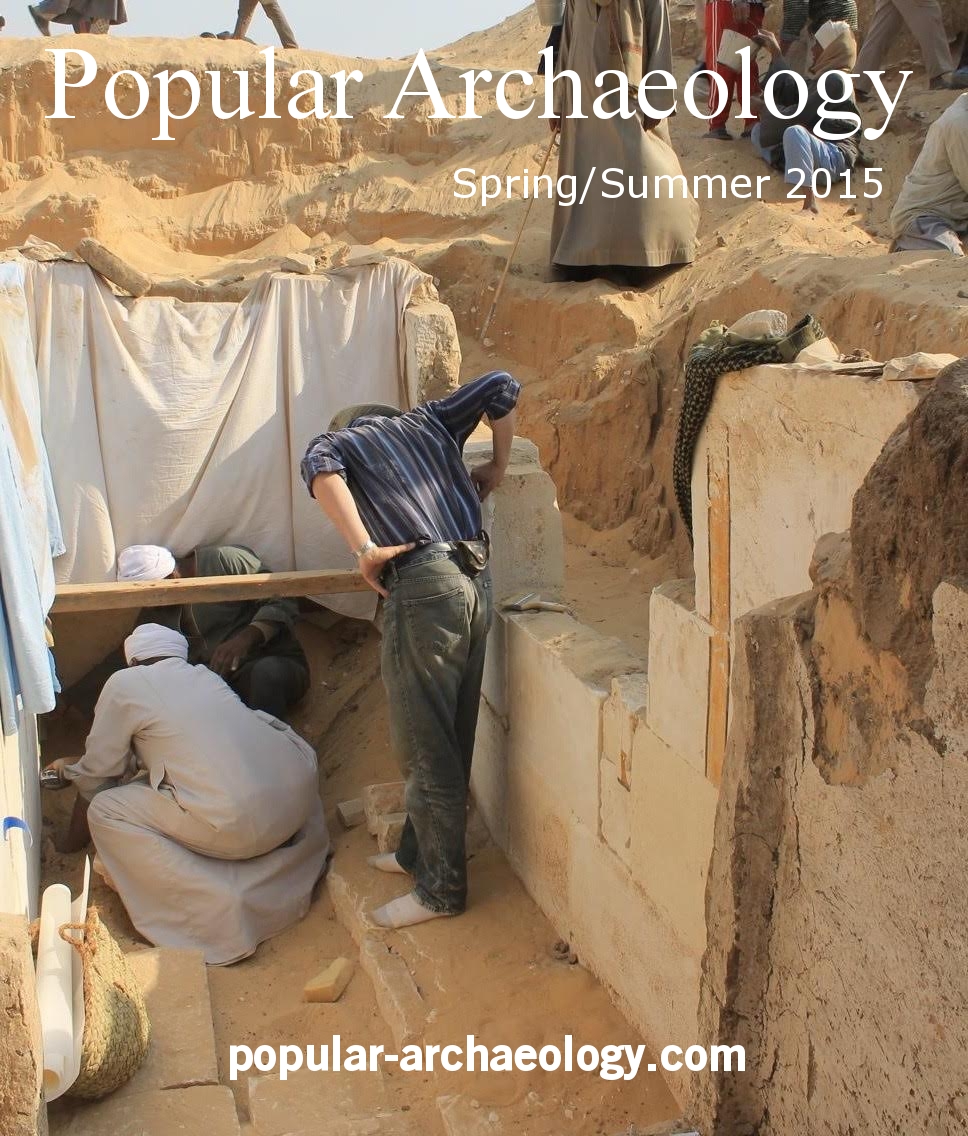When someone says the words “globetrotting archaeologist”, it is easy to imagine an intrepid fictional adventurist like Indiana Jones, traveling to exotic places in the world in pursuit of rare relics or answers to compelling mysteries — or a seasoned, well-known traveling scholar who has already cut his or her teeth with discoveries on numerous international excavations and research projects. Rarely does one associate the term with a PhD-earning archaeologist fresh out of school.
But young Canadian archaeologist Kate Leonard seems determined to redefine the term. Rebounding from a frustrating life-after-school experience of application ‘rejection’ letters from a variety of potential employers who could help jump-start her academic career as a newly minted PhD-credentialed archaeologist, Leonard decided to take a road that few others in her situation have tread — offering her knowledge and skills for free on a crowd-funded project to work at no less than 12 projects in 12 countries in 12 months. She calls it Global Archaeology: A Year of Digs, and project directors all over the world have been keen to benefit from her offer.
“I threw some crazy ideas around and Global Archaeology fulfilled all of what I was looking for: an adventure, further experience in my field, traveling, and meeting new people while interacting with different cultures and learning new skills,” says Leonard. “Through Global Archaeology I will get the chance to explore how archaeology is practiced in different parts of the world and communicate this to others through my blog and Facebook page.”
In this sense, she sees herself as both archaeologist and communicator.
“I feel very passionate about the importance of archaeology as a tool to help us understand our shared humanity and what makes us humans tick,” she says.
Leonard thus sees archaeology as a global unifier of people and society. In the process, she hopes to eventually author a book based on her experiences and present a wider perspective on the field of archaeology as it is actually practiced around the world.
Stopping first in New Zealand for a month, she will move on to countries like Australia, Mexico, South Africa, Greece, and Scotland, to name a few. She will have the help of others. But it will take a village of donors to help her complete her global circuit. She has established a blog and a crowdfunding website that will afford anyone the opportunity to support the project.
Borrow Pits and Iwis
Leonard’s first destination was a site not far from the city of Hamilton in the Waikato region on New Zealand’s North Island. A rich agricultural area, the Waikato is also popularly known as the location of the Hobbiton village set for the movie trilogy, Lord of the Rings.
But Leonard was not here to excavate a Hobbit village. Waikato features a site where the ancient indigenous Maoris dug ‘borrow pits’ — large pits dug by the Maori to remove sand beneath the natural subsoil — to help them mix and cultivate their soils for horticulture. Joining a team of archaeologists from Opus International Consultants Ltd., her task was to help excavate and record them before construction of the Waikato expressway. Initial delays in the start date, however, brought her in the beginning to another location eastward near the Bay of Plenty. “The archaeology on that site was also Maori horticultural features predating the arrival of Europeans, but instead of being located in a green field this site was on the side of a residential road in the middle of a city,” said Leonard. “This meant that I was back and forth across New Zealand from one coast to the other when I thought I would be stationed for the full four weeks in the Waikato. Instead of worrying, I met the challenge head-on and looked at it as a chance to experience the excavation of similar archaeological features in very different circumstances. At the end of the month I look back at this hiccup as a fantastic opportunity that allowed me to dig the full spectrum of Maori horticultural features: from kumara storage (even rua and pātaka) to intentionally modified garden soils and huge borrow pits.”
_______________________________________________
Waikato borrow pit under excavation. Courtesy Kate Leonard
________________________________________________________________
Kate Leonard stands before the borrow pit. Courtesy Kate Leonard
_______________________________________________________________
Above and below, Bay of Plenty excavation (kumara storage pit with post-hole at the base – note the depth of the posthole as demonstrated by Kate Leonard below.) Courtesy Kate Leonard
_________________________________________________
_______________________________________________________________
Excavation at these sites has not been easy. Work required getting down and dirty deep into the soil to uncover the ancient Maori storage pits and structures, borrow pits, fire pits and post-holes. “In the case of the Waikato region,” said Leonard, “under the topsoil there is a layer of volcanic tephra deposited by the Hatepe eruption in 180 AD. The archaeological features are cut into this, but often they were intentionally filled with the natural subsoil and so can be very hard to discern when you are excavating them.” And the mid-day heat didn’t help. “The North Island of New Zealand was undergoing a heat wave while I was here,” she added. “We had some days of 30 degrees C on site with high humidity.”
But Leonard feels the hard work has been well worth it. What the archaeologists are learning at both sites will help expand knowledge about Maori culture before European contact and settlement, an important source of pride and history for the present-day indigenous people, who value their heritage. “In the case of the Bay of Plenty, this is the first time that archaeology has been recorded on that ridgeline, even though it is a residential area full of houses,” said Leonard. “For the local iwi (the Maori word for tribe or group) the discovery of so much archaeology on that small strip of land confirms what their oral history already says. They now have the physical evidence of Maori occupation at that location.” In New Zealand, all archaeological excavations are monitored by members of the local iwi. In the Bay of Plenty region, for example, the excavation was monitored by an iwi elder of the local community, and in the Waikato the iwi rotated four different members to interact with the archaeologists to learn about archaeology and the discoveries being made at the site.
What’s next for Leonard on her global journey?
She’ll be tracing the remains of an early 19th century mental asylum in New Norfolk, Tasmania, in Australia. In that project, she will be helping a Flinders University team of archaeologists to catalogue artifacts in storage and map the remains using a total station, among other tasks. Known as Willow Court, it was Australia’s first asylum, opened in 1829.
Popular Archaeology will be following and reporting on Leonard’s worldwide experiences periodically throughout 2016 as she hops from one location to another.
Readers interested in Leonard’s self-directed Global Archaeology crowdfunded project can learn more at gofundme.com/globalarchaeology.
__________________________________________________________
In addition, the latest Popular Archaeology ebook is now available.
______________________________________________
Travel and learn with Far Horizons.
____________________________________________
This richly illustrated issue includes the following stories: Two remarkable discoveries that are shedding light on human beginnings in Africa; a traveling exhibit and an archaeological site that show how knowledge is more valuable than gold; a Spanish cave and a unique burial that are offering a tantalizing glimpse on the lives of Ice Age hunter-gatherers in Europe; the stunning visual reconstruction of an ancient Roman town; enlightening new finds at a remarkably well-preserved site of ancient Hellenistic-Roman culture overlooking the Sea of Galilee; rare finds that are shedding light on occult practices among ancient Greeks in Sicily; and an overview of the overwhelmingly rich archaeological heritage of Britain. Find it on Amazon.com.

